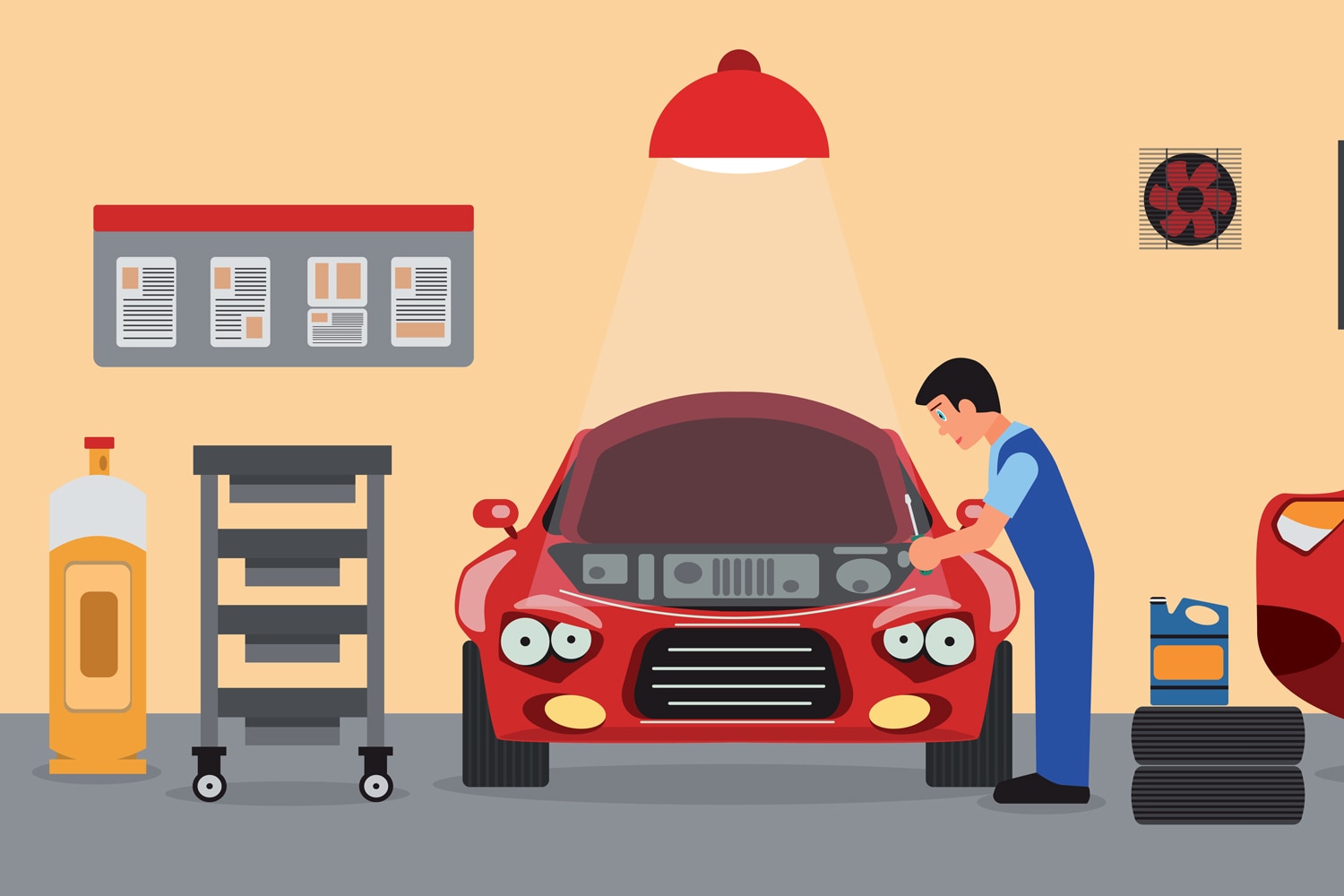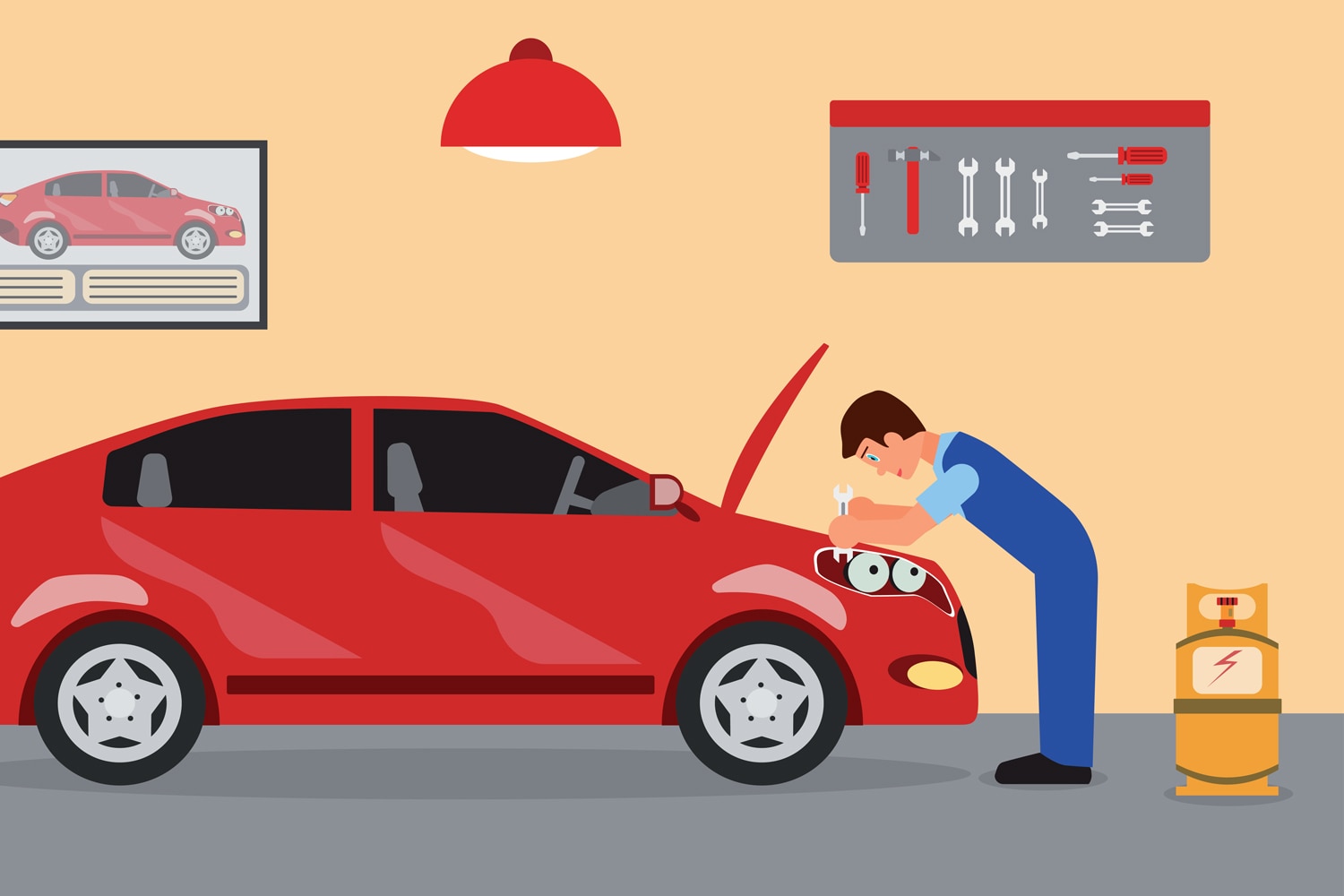The Ultimate Guide to Road Trip Vehicle Maintenance
Preparing your vehicle for a road trip is just one of the many steps you need to take before hitting the road.
 Shutterstock
Shutterstock
No matter the destination, there is a lot of planning for yourself, your family, and your vehicle when taking a road trip. Those who frequently participate in carpooling should also consider preparing themselves and their vehicle before longer trips.
To get ready for a road trip, you can:
- Double-check your finances
- Research the most optimal route to the destination
- Check the weather in advance
- Create a backup plan
Next is vehicle maintenance and preparation. Preparing your car for the road has many benefits, including ensuring a safe trip. You’re more likely to avoid car problems throughout your voyage if you inspect your car beforehand.
Those who’ve recently purchased or plan to purchase a used vehicle will want to be especially mindful of any signs maintenance is needed. You may even consider setting additional funding aside dedicated to vehicle maintenance, for this can be a hidden purchasing cost not discussed during the initial negotiations.
Let’s take a closer look at essential maintenance steps to get your car ready for the road.
 Shutterstock
Shutterstock
Check the Fluid Levels
There are six essential fluids you should check before every long-distance trip (unless you are driving an electric vehicle, which has fewer fluids to maintain):
Brake Fluid
Brake fluid is necessary to apply force to brake pads, which clamp onto the rotors that slow and stop the wheels. You may need to check your brake fluid if you feel a delay in your brakes or any other abnormal feeling. To check the brake fluid, locate the brake fluid reservoir in your engine bay.
Electric vehicles will come with a handbook that provides step-by-step instructions on checking the brake fluid. If the fluid level is below the minimum, then it needs to be filled.
Coolant
Coolant or antifreeze helps keep the engine cool by absorbing heat and releasing it through the radiator. If you run your engine without coolant it would overheat and possibly crack, and/or blow a gasket. It’s important to note that you must wait until the engine is completely cooled down before checking coolant levels. Checking too early could release steaming, pressurized fluid and cause burns.
How to check coolant levels varies by vehicle make and model. Look at your vehicle's manual or conduct online research to learn how to check coolant levels in your vehicle. Electric vehicles also require coolant maintenance specific to each EV type and maintenance schedule.
Engine Oil
Engine oil is one of the most important fluids for your vehicle, and luckily, it’s easy to check on most vehicles. After turning off your car, wait at least 10 minutes before checking the oil level to allow it to cool and settle. This will give you a more accurate gauge of how much you’ll need. From there, you will locate and remove the dipstick. Next, wipe the dipstick clean with a rag or napkin and reinsert it back into the oil well. When you remove it again, pay close attention to the end of the dipstick. Ideal oil levels should be between the minimum and maximum markers on the dipstick.
Anything less than the minimum means you need more oil. Clean oil is a yellowish color and has a smooth texture. If the oil on the dipstick is dark in color and has a coarse texture, then an oil change is needed. If you notice any corrosion or build-up or if the oil is black, then it may be a sign to get an oil change. Besides, getting an oil change before a road trip is beneficial in general even if it’s not quite time.
Note that electric vehicles do not need oil changes. If you don’t drive an EV, double-check the oil type and ensure it’s the right one before putting it in your vehicle. This information can be found on the oil cap, in the car’s manual, and online.
Power Steering Fluid
Power steering fluid helps the driver turn the steering wheel with ease. If you notice the wheel becoming more difficult to turn, it could be a sign your power steering fluid levels are low. Similar to your engine oil, there’s a dipstick you can use to check power steering levels. Note that most electric vehicles do not require power steering fluid.
Transmission Fluid
Transmission fluid cools and lubricates the inner workings of the vehicle's transmission. Signs you may need more transmission fluid include rattling and other strange noises coming from the transmission, or difficulty shifting gears. Some vehicles have their own dipstick to check transmission fluid levels. Others require a mechanic’s inspection.
Since they operate with an electric motor, most electric vehicles do not have transmissions in the traditional sense, so you likely won’t need to replace or fill up the transmission fluid. However, it’s important to always follow maintenance instructions specific to your vehicle.
Windshield Washer Fluid
While it’s not needed for the car’s performance, this simple, effective fluid can make it easier to see while driving when the window gets dirty. Windshield washer fluid gets rid of debris, dirt, and bugs on the windshield. You can open the cap of the reservoir and look directly in to determine whether you need more. Fill it to the top when necessary with fluid matched to the conditions you expect.
You can check all of these fluids yourself or take your vehicle to the mechanic for professional guidance.
 Shutterstock
Shutterstock
Check the Tires
A thorough check of your tires is a must before any road trip, regardless of whether you drive a conventional, hybrid, or electric vehicle. When traveling long distances, your tires must be able to safely withstand the elements of the road for many miles.
Ensure the current state of your tires is right for the anticipated weather conditions throughout your journey. If you’re traveling during the winter, you may consider winterizing your vehicle with snow tires or chains/cables for winter driving conditions.
Here are a few additional things to look for when checking your tires before a trip:
- Tire pressure (check your manual or inside your car door for information on ideal tire pressure)
- Enough tread and traction
- No exposed wires
Tire maintenance can be expensive, but it’s necessary. Failure to check them could result in poor gas mileage, unsafe driving conditions, or a blown tire. You may consider investing in a tire repair kit to store in your vehicle in case of a flat tire along the way.
Check the Brakes
Aside from checking the brake fluid, you’ll want to make sure your brakes in general are working properly. If you notice any delay when braking or hear a weird sound when slowing down, then take your car to the mechanic as soon as you’re able.
From here, the mechanic will be able to get a closer look at the cause of the problem. If there are any problems, then it’s a good idea to have them repaired before the trip.
Check the Battery
Checking the battery is another easy, yet crucial step of road trip preparation. To check your battery:
- Start the engine and ensure it doesn’t start slowly (failure to start at all is a telltale sign the battery may be dead)
- Verify the battery cables attached to the terminals (both positive and negative) are clean and corrosion-free
Flashing dash lights could be another indicator that the battery may need to be replaced. Luckily, not every dead battery needs to be replaced; some just need to be charged. Routinely taking care of the battery is necessary to maintain a charge.
To maintain a vehicle battery:
- Check it often to ensure it is clean and secure. Signs of leaking or corrosion could indicate the battery isn’t running efficiently
- Always turn off your vehicle when it’s not in use
- Remove corrosion using water and baking soda
- Test the battery often to ensure it’s holding a charge
Those with electric vehicles must remember that the battery is the primary source of power for their vehicle. Consider downloading an EV travel app—like
 Shutterstock
Shutterstock
Check the Lights
Even if you’re not planning to drive at night, it’s a good idea to make sure the vehicle's lights work properly. Some highway safety corridors may require your lights to be on at all times for safety. Ensuring they all work ahead of time is smart not just for the sake of visibility, but also to avoid breaking any laws along the way.
Before you leave, be sure to check the following lights on your vehicle:
- Turn signals (front and back)
- Brake lights
- Headlights (high and low beams)
- Backup lights
Take note of any light that doesn’t work and replace bulbs as necessary. If needed, take your vehicle to a mechanic for assistance.
Bring Along a Repair Kit and Emergency Supplies
A final consideration for preparing your vehicle is creating a roadside emergency kit to keep in your vehicle at all times. It’s never a bad idea to be too prepared, especially when going on a road trip.
Here are a few things to pack in your roadside repair kit:
- Road flares
- Flashlight
- Jumper cables
- Tire pressure gauge
- Tool kit
Here are a few additional items to keep in your vehicle in case of an emergency:
- Emergency blanket
- First aid kit
- Flashlight batteries
- Flint starter
- Hatchet
- Ice scraper
- Non-perishable food
- Paper towels
- Triangle reflectors
- Walkie talkies
- Water
Preparing your vehicle for a road trip can be costly and time-consuming. But you can never be too safe. Always make a backup plan with an alternative mode of transportation and housing, just in case you encounter any issues along the way.
Don’t forget to bring copies of insurance (including GAP insurance), prepaid maintenance plans, extended warranty information, registration, and any other information about the vehicle. That way, you’ll know what maintenance issues are covered beforehand and what you’ll be expected to pay for out-of-pocket if you encounter a serious issue while on the road.
Written by humans.
Edited by humans.
 Capital One
Capital OneBanking should leave you with the same great feeling you get when you drive casually on a weekend afternoon. And that’s how I feel when writing helpful tips and reviews – passionate about cars and passionate about financing and everything in between when buying a new ride.
Related articles
View more related articles